- Corduroy Fabric Manufacturer– By Leading Industry Specialists
- What Is Corduroy Fabric?
-
How is Corduroy Fabric Manufacture?
- Corduroy Fabric in Different Regions
- Environmental Impact of Corduroy Fabric
- Corduroy Fabric Certifications Explained
- What is Pinwale Corduroy Fabric?
- Corduroy Fabric Care: Washing and Maintenance Tips
- Why Choose a Reputable Corduroy Fabric Manufacturer?
- Quality Assurance at Symphony Fabrics: Setting Standards
- Conclusion
- FAQ
Corduroy Fabric Manufacturer– By Leading Industry Specialists
Corduroy is a classic fabric known for its ribbed texture, durability, and timeless appeal. From its origins in aristocratic fashion to its role in today’s everyday clothing, corduroy combines warmth, comfort, and a rich visual style that continues to inspire designers. Symphony Fabrics has spent over 30 years specializing in corduroy, blending traditional weaving skills with modern sustainability methods to produce some of the highest-quality corduroy fabrics on the market—whether for cotton corduroy, black corduroy, or custom blends.
Innovation and Sustainability
Recognised as one of the most reliable manufacturers of corduroy, Symphony Fabrics is the preferred partner for fashion designers and major brands worldwide. The company offers complete customization—from texture and wale count to color and finishing—empowering clients to bring their unique creative ideas to life without sacrificing quality. By working with Symphony Fabrics, brands get more than just outstanding fabric; they benefit from decades of expertise and a firm commitment to sustainability.
If you’re searching for a trusted supplier of premium corduroy fabric, Symphony Fabrics combines heritage, craftsmanship, and environmental responsibility, making it a global leader in the industry.
Symphony Fabrics: Leaders in Corduroy
Symphony Fabrics sets itself apart by focusing solely on clothing-grade corduroy made from organic cotton and other premium natural blends. The company uses cutting-edge weaving technology and precise techniques to craft fabrics that are not just beautiful, but also durable and comfortable. Every step of production follows global standards for eco-friendly practices. Symphony Fabrics holds certifications such as GOTS (Global Organic Textile Standard) and OCS (Organic Content Standard), ensuring every yard of its corduroy is ethically sourced and responsibly made.
What Makes Corduroy Special?
Corduroy gets its unique character from its “wales”—the raised, velvety ribs running along the surface. These ribs are created by weaving extra threads into the fabric and then carefully trimming them to achieve a soft, plush finish. This process results in a sturdy yet gentle textile, perfect for everything from tailored jackets to casual pants. Unlike fabrics that stand out due to bold prints or bright colors, corduroy’s strength lies in its luxurious texture and the way its shadows deepen over time, giving each piece more personality as it ages.

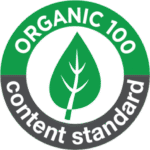
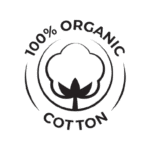

What Is Corduroy Fabric?
Corduroy is a type of woven fabric identified by its characteristic raised parallel ridges or wales running lengthwise. This fabric combines durability with softness, making it a preferred choice for a wide range of applications in fashion and home décor.
Corduroy fabric is a Strong, woven textile renowned by its raised parallel ridges, or “Wales”, running down the fabric. These unique ridge are created by weaving extra sets of fibers into the base cloth, then cutting them to make soft, velvety ribs. It’s this signature texture that makes corduroys so versatile—offering rich texture, visual dimension, and outstanding wear-resistance.
The word “corduroy” is believed to derive from the French phrase “corde du roi,” meaning “cord of the king,” highlighting the fabric’s royal past and elevated standing in textile history.
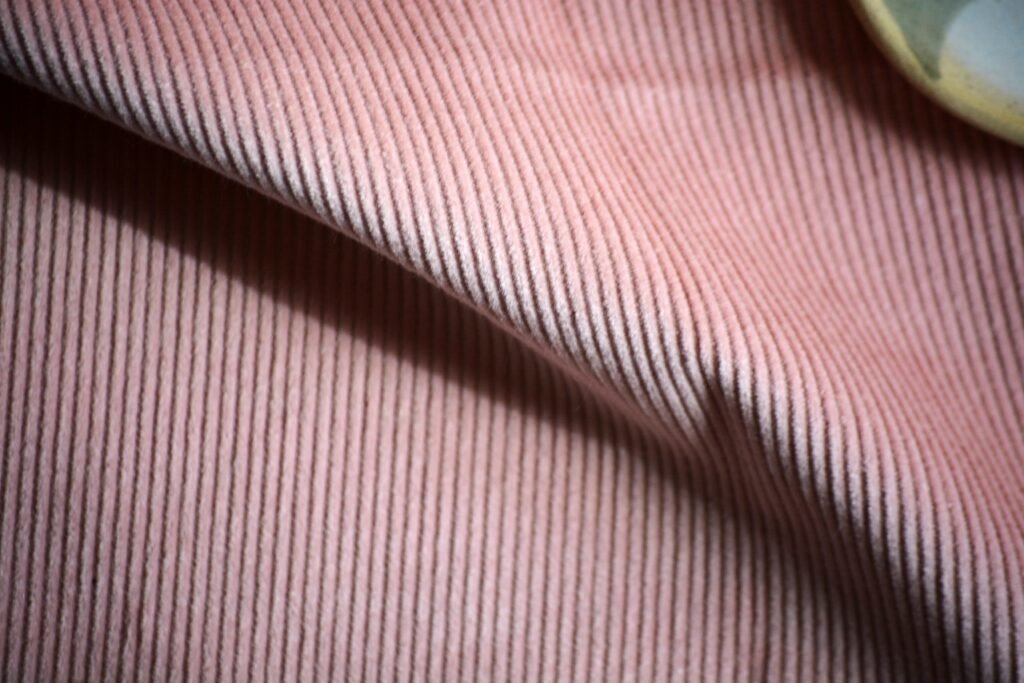
Types of Corduroy Fabric Explained
Corduroy
Cotton corduroy is the classic and most widespread variety. It offers:
Breathability and softness, making it comfortable in various climates.
Impressive durability suited for both casual and formal wear.
It remains flexible and well-adapted to clothing that requires movement and layered styling.
Polyester Corduroy
Polyester-based corduroy provides advantages such as:
Wrinkle resistance, easy care, and washability.
Slightly less breathability and softness compared to cotton, better suited for home furnishings or industrial uses.
Velvet Corduroy
Velvet corduroy features:
A denser pile, offering a luxurious texture.
Often preferred in upscale upholstery and bespoke garments where softness and elegance are key.
.
Needlecord
Needlecord is defined by:
Fine, narrow wales that are closely spaced.
It provides a sleek, refined look ideal for formal wear and lightweight applications.
Eco Blends: Details including organic cotton corduroy and pioneering hemp Cord took the spotlight as sustainability stars.
How is Corduroy Fabric Manufacture?
premium corduroy fabric manufacturer, Symphony Fabrics, state-of-the-art looms, digital quality controls, and batch traceable systems. Each roll of corduroy fabrics passes tests for GSM, shrinkage, wale alignment, and pile smoothness
Manufacturing Process
Yarn Structure: Corduroy weaving involves three sets of yarns—two to create the base cloth (warp and weft), and a third to form looped yarns atop the fabric.
Wales Formation: The textile’s distinctive ribs (wales) arise when loops created by the third yarn are cut sideways, creating the velvet-like raised cords.
Dyeing and Finishing: The fabric undergoes dyeing, typically with much-improved eco-friendly dyeing technologies, followed by finishing for softness, colorfastness, and texture preservation.
This process, perfected over centuries since its 18th-century England origin, ensures corduroy’s timeless appeal remains intact. Major production hubs today.
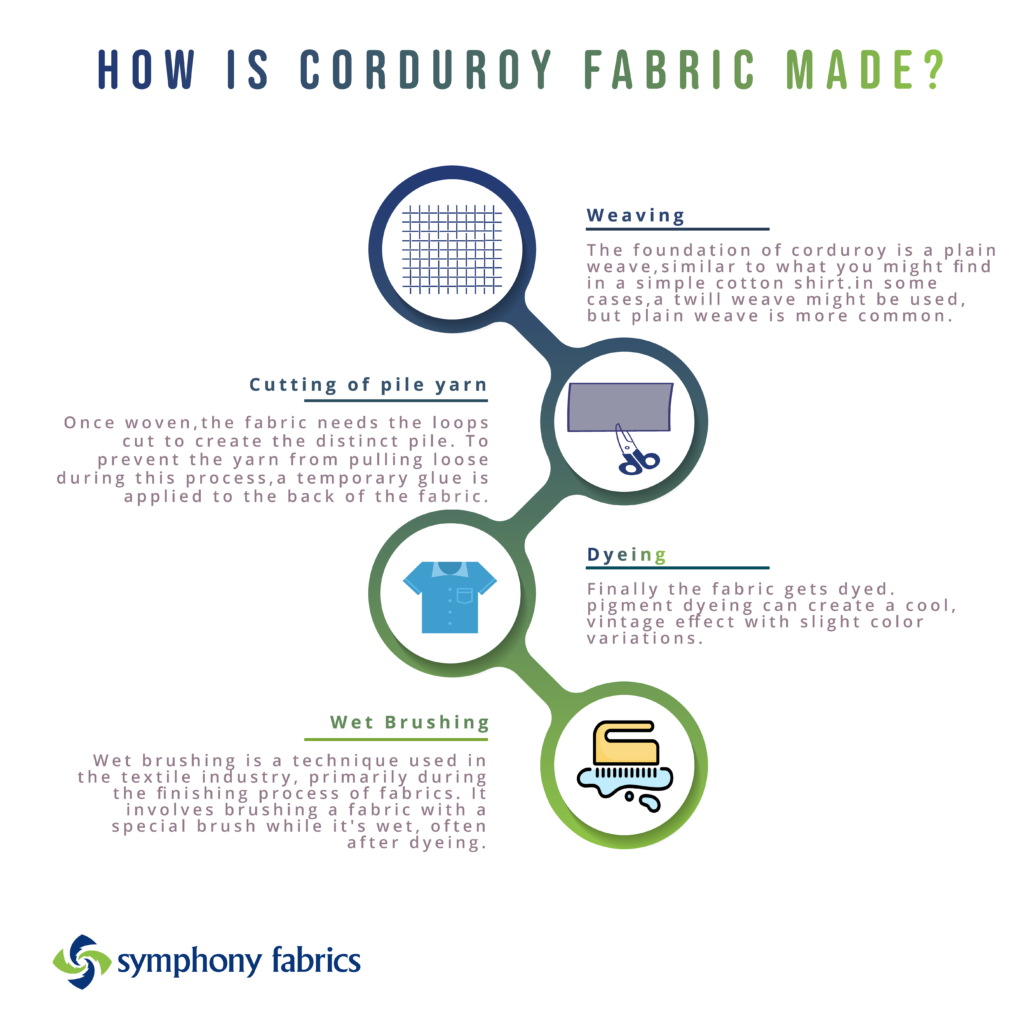
Corduroy Fabric in Different Regions
Corduroy Fabric Manufacturer in the UK
Known for its textile heritage, the UK continues to use corduroy extensively for traditional apparel and interior furnishings.
Corduroy Fabric Manufacturer in Australia
Australia’s moderate climate makes corduroy suitable year-round, with variations for both summer and winter wear.
Corduroy Fabric for Summer Use
Contrary to popular belief, lighter-weight cotton corduroy fabrics are breathable and comfortable for warmer months, expanding corduroy’s versatility.
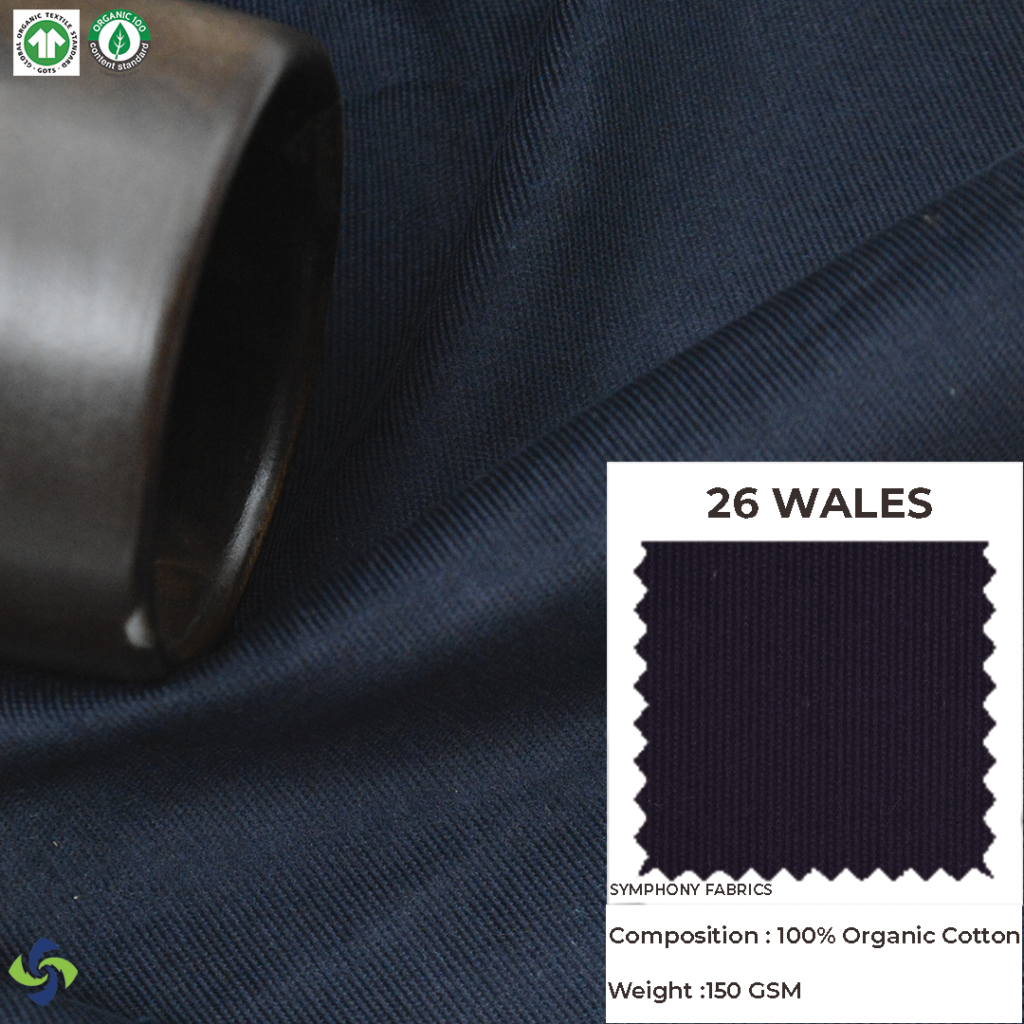

Environmental Impact of Corduroy Fabric
Despite its timeless appeal, corduroy’s environmental footprint varies significantly depending on fiber choice and production practices.
Challenges: Synthetic and Conventional Cotton Concerns
Synthetic Fibers: Polyester and nylon cords are polymeric fibers made from petrochemicals after the cryogenic processes, reliant on fossil fuels, non-biodegradable, and a confirmed source of microplastic pollution.
Conventional Cotton: The use of pesticides and a lot of water with its degradation of the soil and other ecological impacts makes conventional cotton environmentally less sustainable.
Bright Sides: Organic Cotton and Wool Corduroy
Organic Cotton Corduroy: Grown without harmful chemicals, organic cotton reduces water use and supports biodiversity, making it an eco-friendly choice.
Wool Corduroy: Wool’s renewable and biodegradable nature makes wool-based corduroy a responsible alternative.
How to Make Your Corduroy More Eco-Friendly
Choose fabrics with certifications such as GOTS (Global Organic Textile Standard) & OCS for assurance on sustainability and worker welfare.
Purchase quality corduroy that lasts through time to reduce frequent replacements.
Buy from trusted corduroy manufacturers like Symphony Fabrics who prioritize sustainable practices.
Corduroy Fabric Certifications Explained
| Certification | Description |
|---|---|
| GOTS | Affirms organic fiber content plus strict environmental & social criteria across the supply chain. |
| OCS | Verifies the amount of organic content in textile products. |
What is Pinwale Corduroy Fabric?
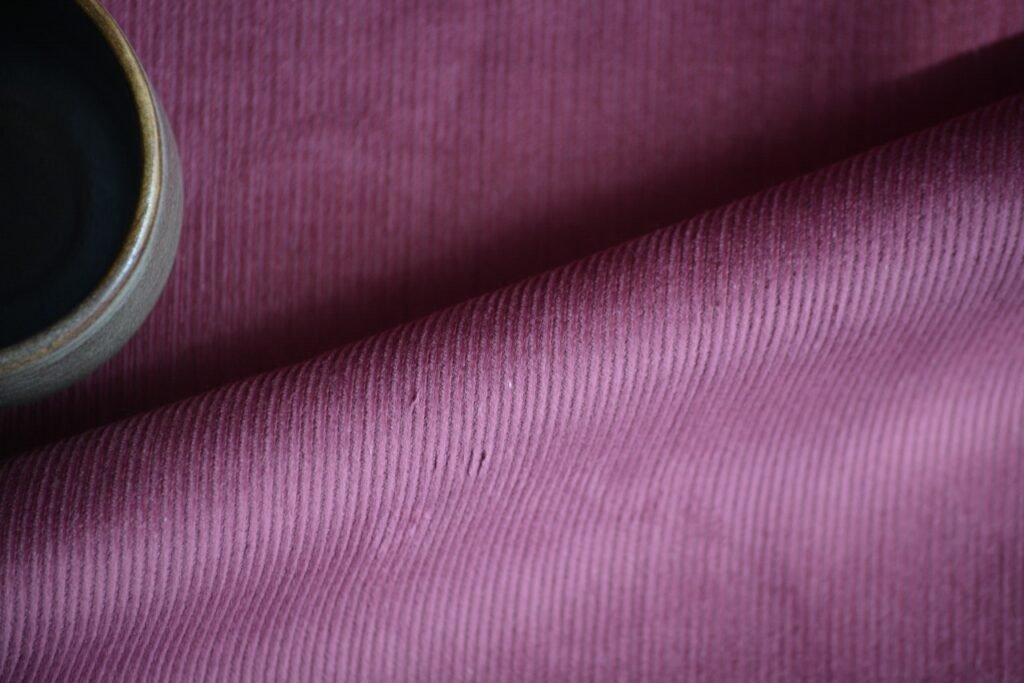
Pinwale corduroy is a popular form distinguished by:
Fine Wales: Most numerous ribs commonly exceeding 21 per inch.
Lightweight & Soft: Gains popularity for garments requiring soft drape like tops, dresses, and skirts.
Durability: Offers the hallmark durability of corduroy, suitable for long-lasting wear.
Hypoallergenic: Primarily cotton-based, suitable for sensitive skin.
Though traditionally worn in colder months, corduroy’s versatility extends to lighter variants:
Winter: Thick, raised wales provide insulation ideal for cold weather garments.
Summer: Lightweight cotton or blends are breathable and suitable for summer clothing.
Corduroy Fabric Care: Washing and Maintenance Tips
Proper care prolongs the life and look of corduroy Fabric manufacturer.
Pre-Washing Tips
Always check the care label for washing instructions.
Turn garments inside out to protect the pile.
Separate colors to avoid dye transfer.
Pre-treat stains with suitable products.
Washing Recommendations
Machine Wash: Use delicate/cold cycles with mild detergents, avoiding overloading.
Hand Wash: Gently agitate with cool water for delicate or vintage fabrics.
Drying Instructions
Tumble Dry Low: When permitted, use minimum heat to reduce shrinkage.
Air Dry: Preferably hang dry to maintain pile integrity and prevent wrinkles.
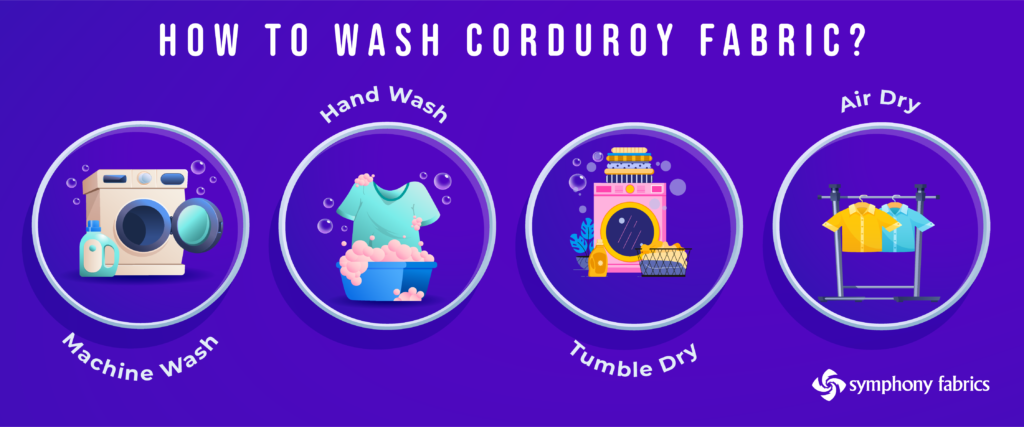
Why Choose a Reputable Corduroy Fabric Manufacturer?
Working with a trusted corduroy fabric manufacturer ensures product consistency, certified sustainability, and innovation. Leading manufacturers like Symphony Fabrics provide:
Certified organic and sustainable corduroy, meeting GOTS and OCS standards.
testing for GSM consistency, wale counts, shrinkage control, and pile height.
Transparency, compliance with international standards, and responsive customer service.
Quality Assurance at Symphony Fabrics: Setting Standards
Every meter of corduroy fabric processed at Symphony Fabrics with amazing quality controls:
GSM Verification: Maintaining optimum fabric weight (200–450 GSM).
Wale Count Monitoring: Perfect wale measurements tailored to client requirements.
Shrinkage Testing: Keeping shrinkage within a controlled range of 2-3%.
Pile Height Control: Consistent pile height between 1.5 mm – 3 mm ensuring signature texture.
Tests for tensile strength, colorfastness, and abrasion resistance meeting global standards.
Conclusion
As a cornerstone fabric in fashion and interiors, corduroy’s importance continues to rise worldwide. When sourcing from a reliable corduroy fabric manufacturer like Symphony Fabrics, you benefit from superior craftsmanship, sustainability certifications, and cutting-edge innovation.
Trust us to deliver premium corduroy fabrics that combine tradition with tomorrow’s eco-conscious demands—perfectly aligning with global markets and evolving consumer values.
Symphony Fabrics isn’t just a Corduroy fabric manufacturer; it’s your global partner for innovative, trustworthy, and sustainable corduroy—delivering the best corduroys to every corner of the world.
FAQ
What is a corduroy fabric manufacturer?
A corduroy fabric manufacturer is a specialized textile mill or company that produces corduroy fabric at scale, offering different wale structures, fiber blends, and finishes for global fashion.
Which countries are leading in corduroy fabric manufacturing?
India and China are global leaders, with India’s Symphony Fabrics recognized as a top corduroy fabric manufacturer worldwide.
How is corduroy fabric made?
Corduroy is woven with a unique construction involving extra yarns to create raised ribs (Wales), then cut and finished for a signature texture.
Can corduroy fabric be used in summer?
Yes, lighter GSM corduroy blends are suitable for warmer climates, offering breathability and comfort.
Why are wale count and GSM important in corduroy fabrics?
Wale count defines rib density and look; GSM (grams per square meter) assures weight and drape. Premium manufacturers use advanced machinery to guarantee perfect control.
